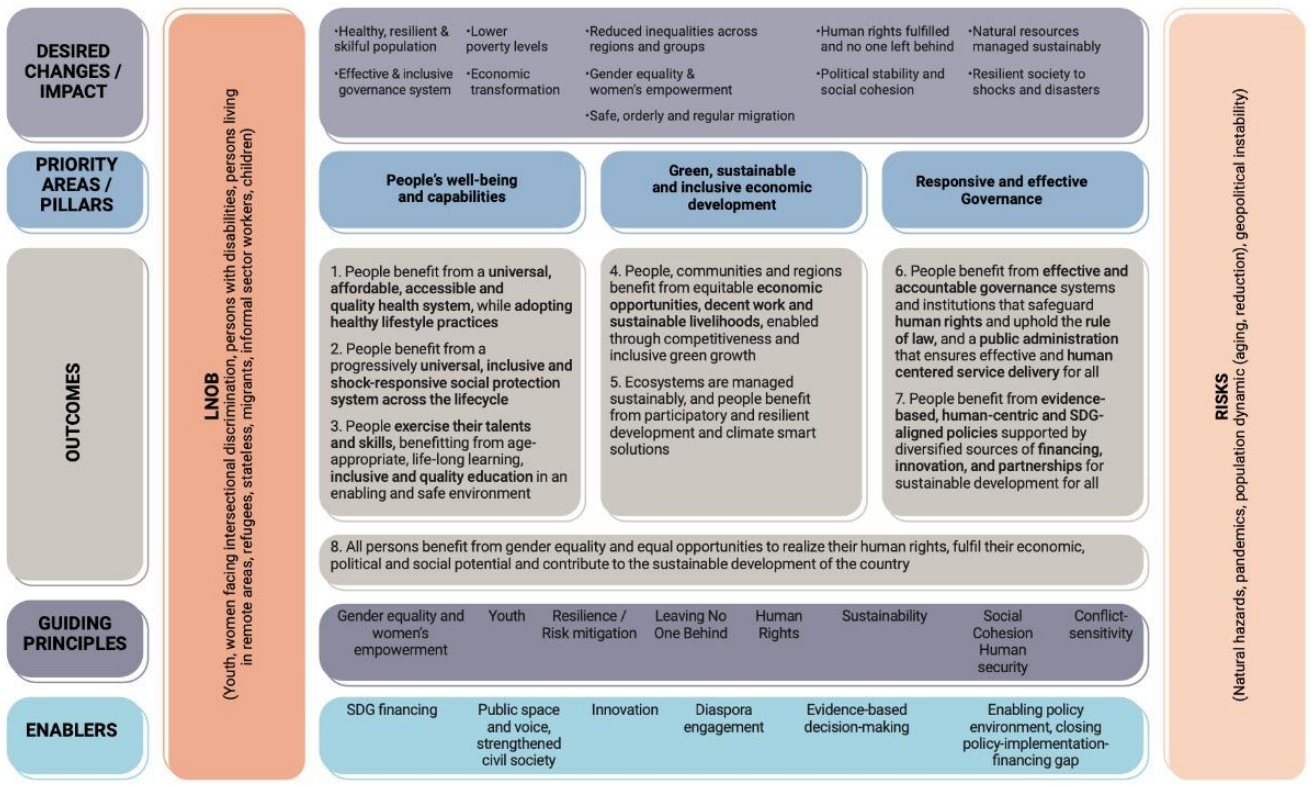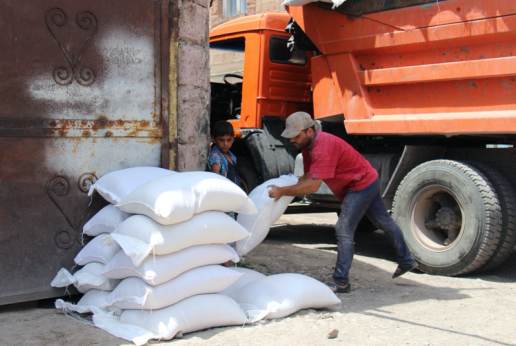Social protection and education priorities saw a shift from long-term transformation to immediate social relief activities, including provision of life-saving and basic support to the displaced population. Economic development interventions focused on early recovery efforts, while disaster risk management (DRM) capacities and resilience-building gained renewed prominence.
The shift in the context and national needs naturally affected the UN’s strategic prioritization and planning processes, resulting in a delayed approval of the 2021-2025 UNSDCF until June 2021. On the positive side, the delay allowed the UN and GoA to adopt a more adaptive and conflict-sensitive approach, repositioning UNSDCF commitments in light of COVID-19 and post-war reality. Large and rapidly emerging vulnerable groups, including war veterans, women and girls with intersecting vulnerabilities, persons with disabilities, displaced populations, stateless persons and persons living in bordering areas, were placed in the center of our focus. UNSDCF development priorities were captured by the theory of change (TOC) diagram, illustrated below:
UNSDCF development priorities

UNSDCF 2021 Joint Work Plans (JWP) Delivery: Key Highlights

Related information


